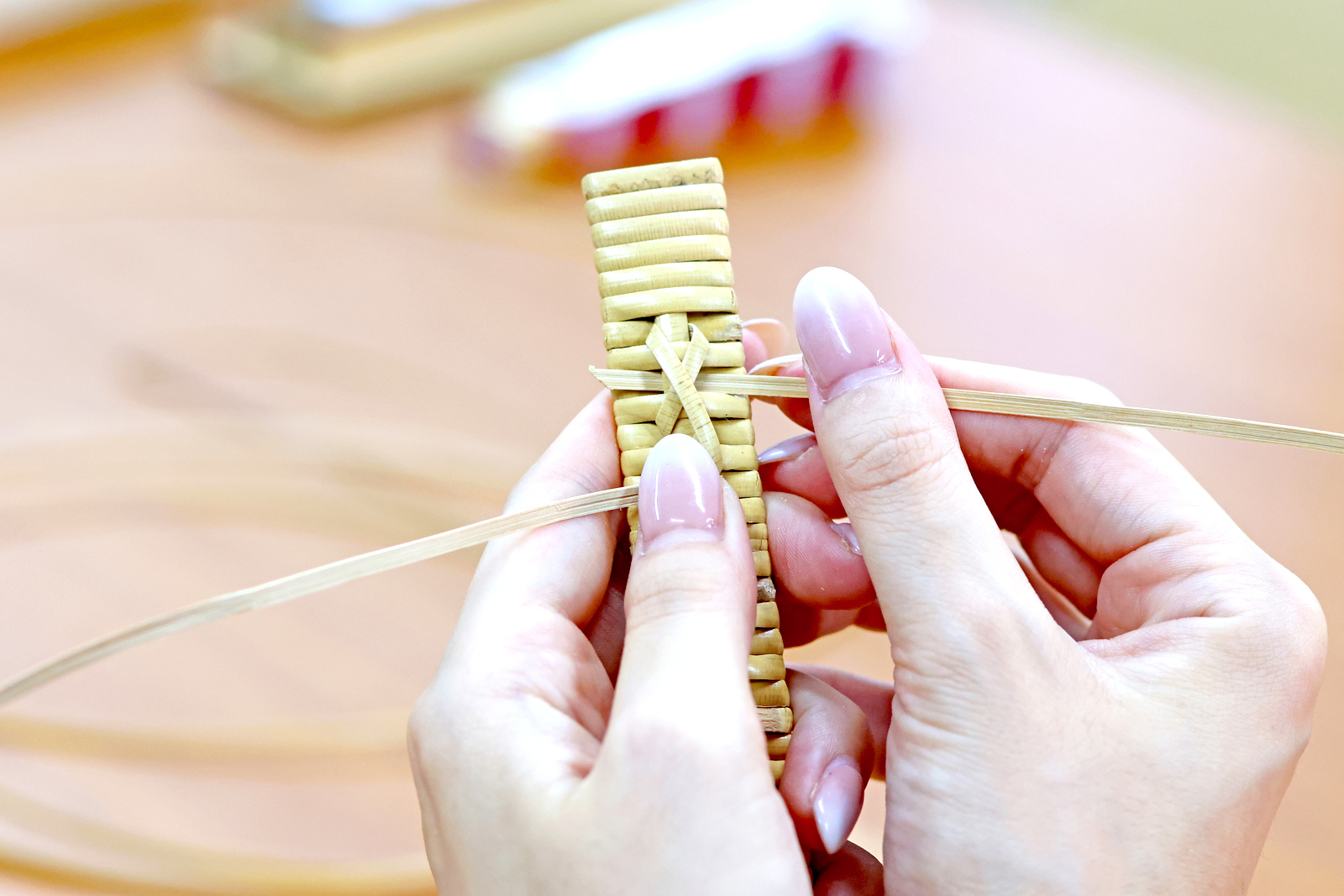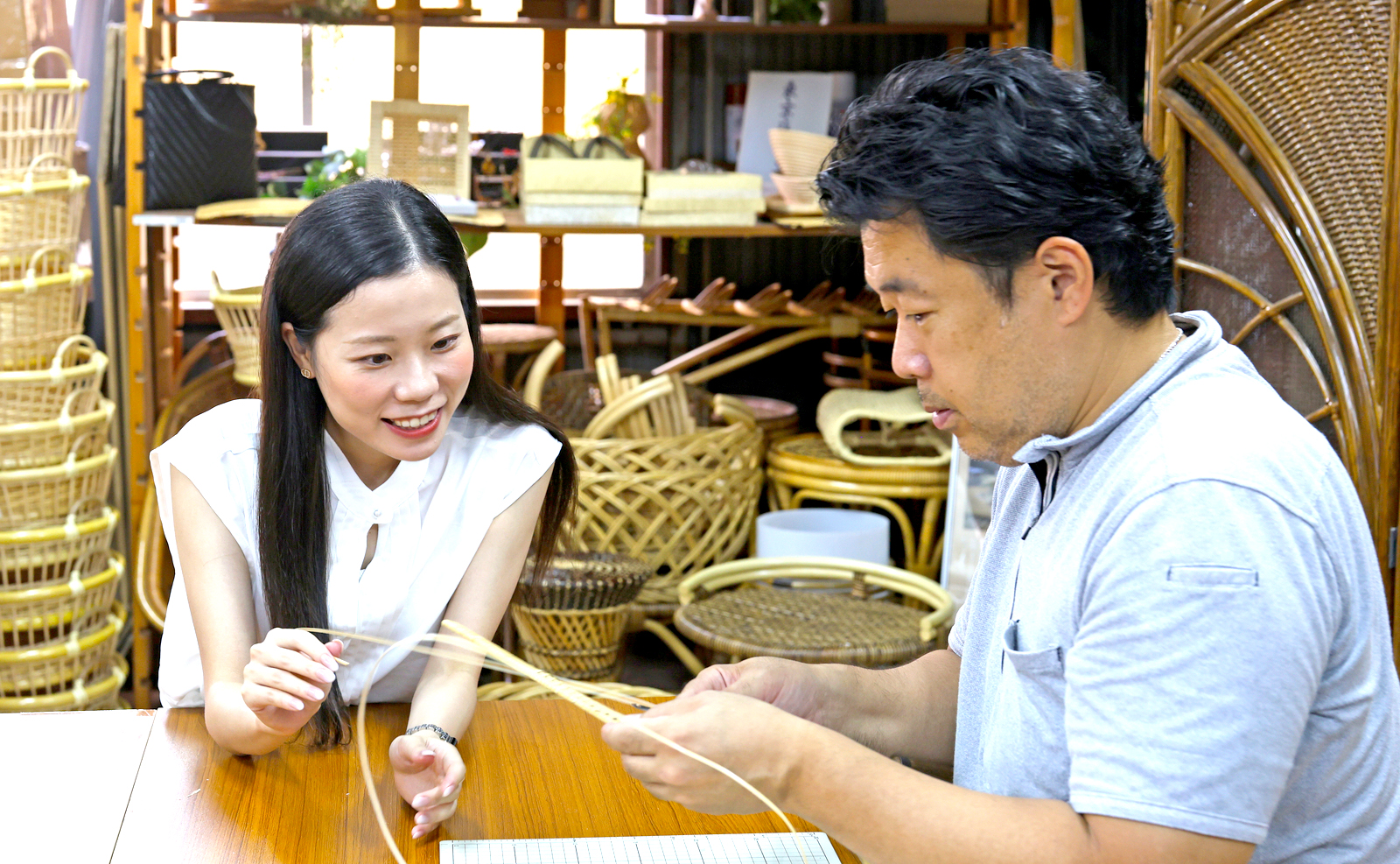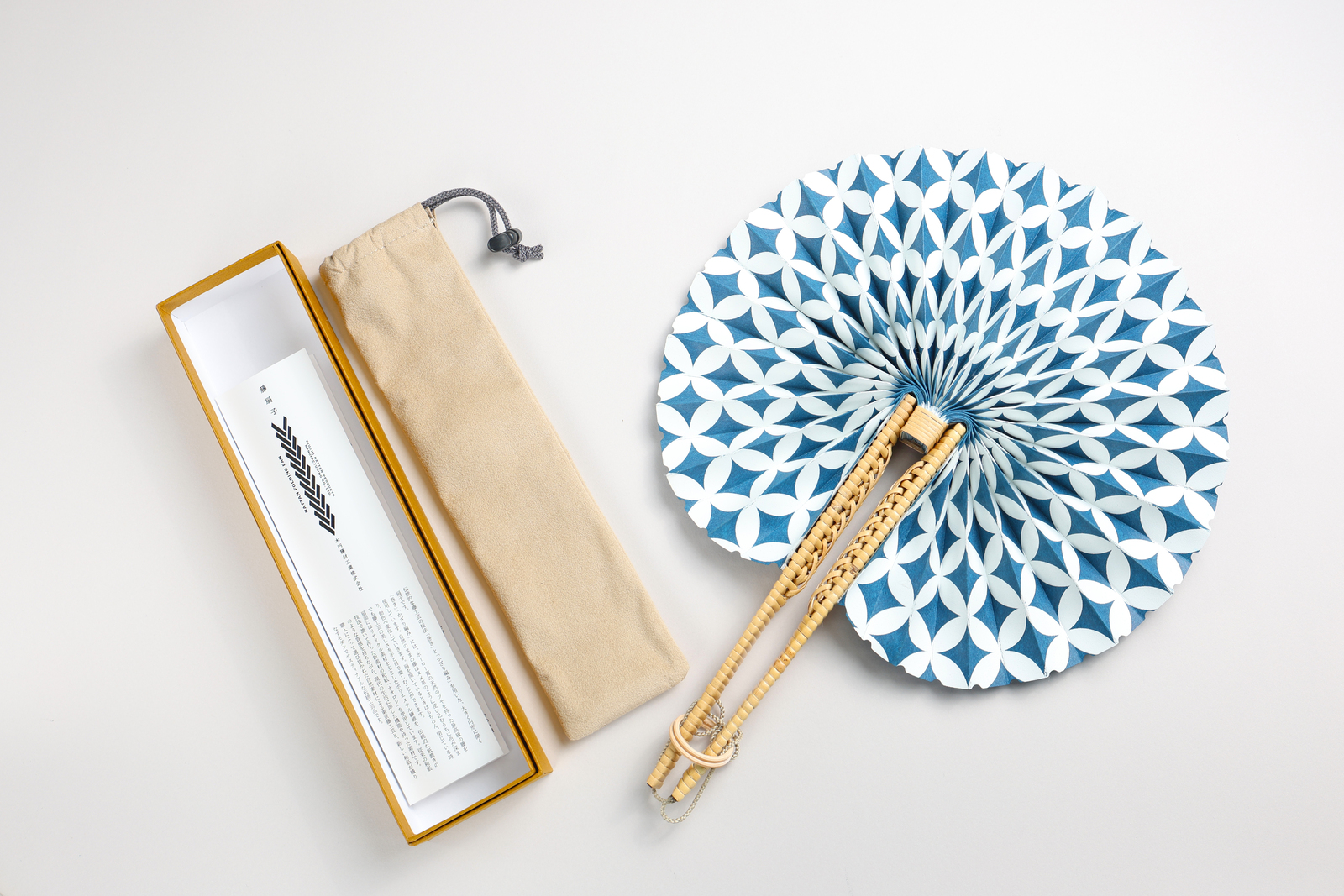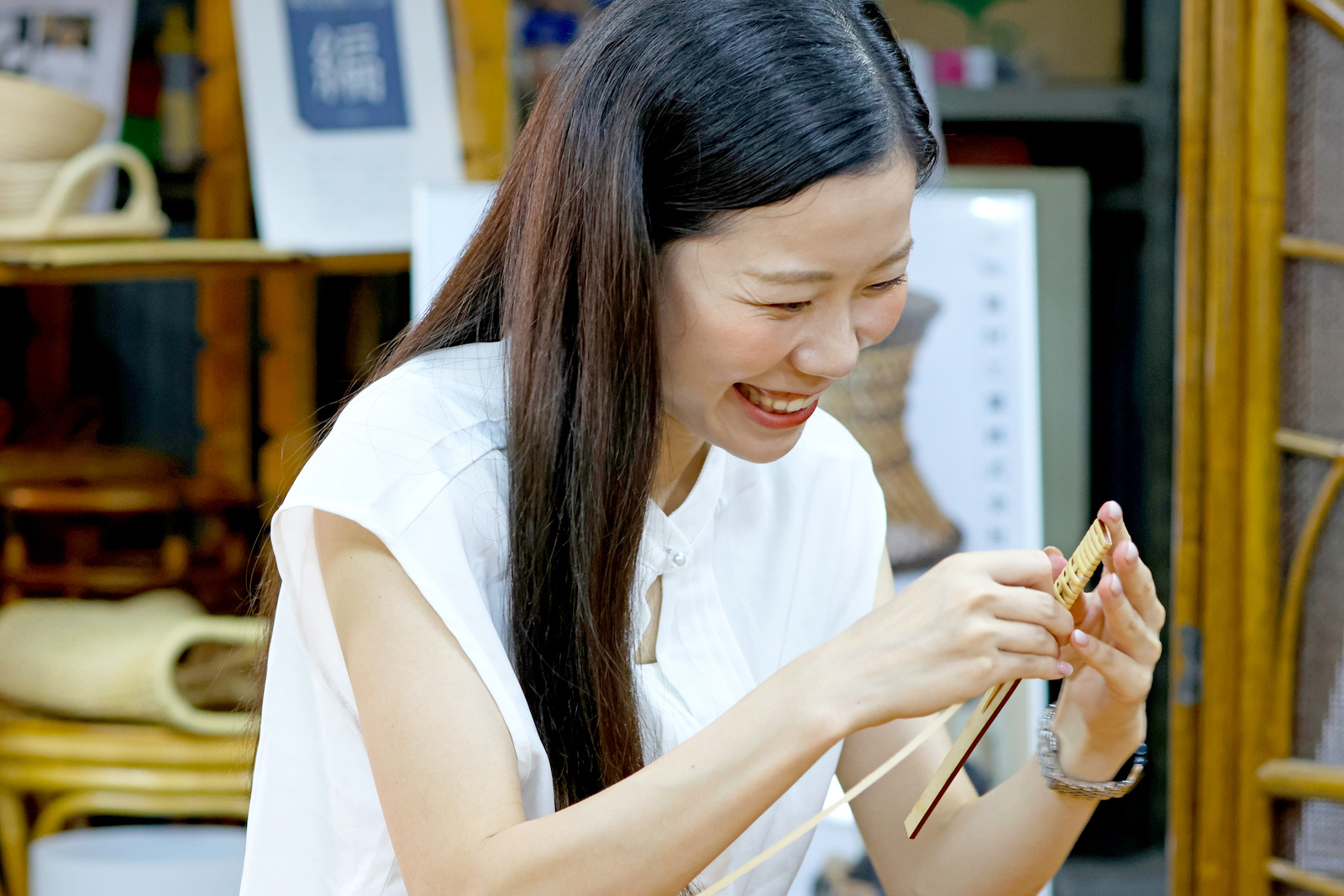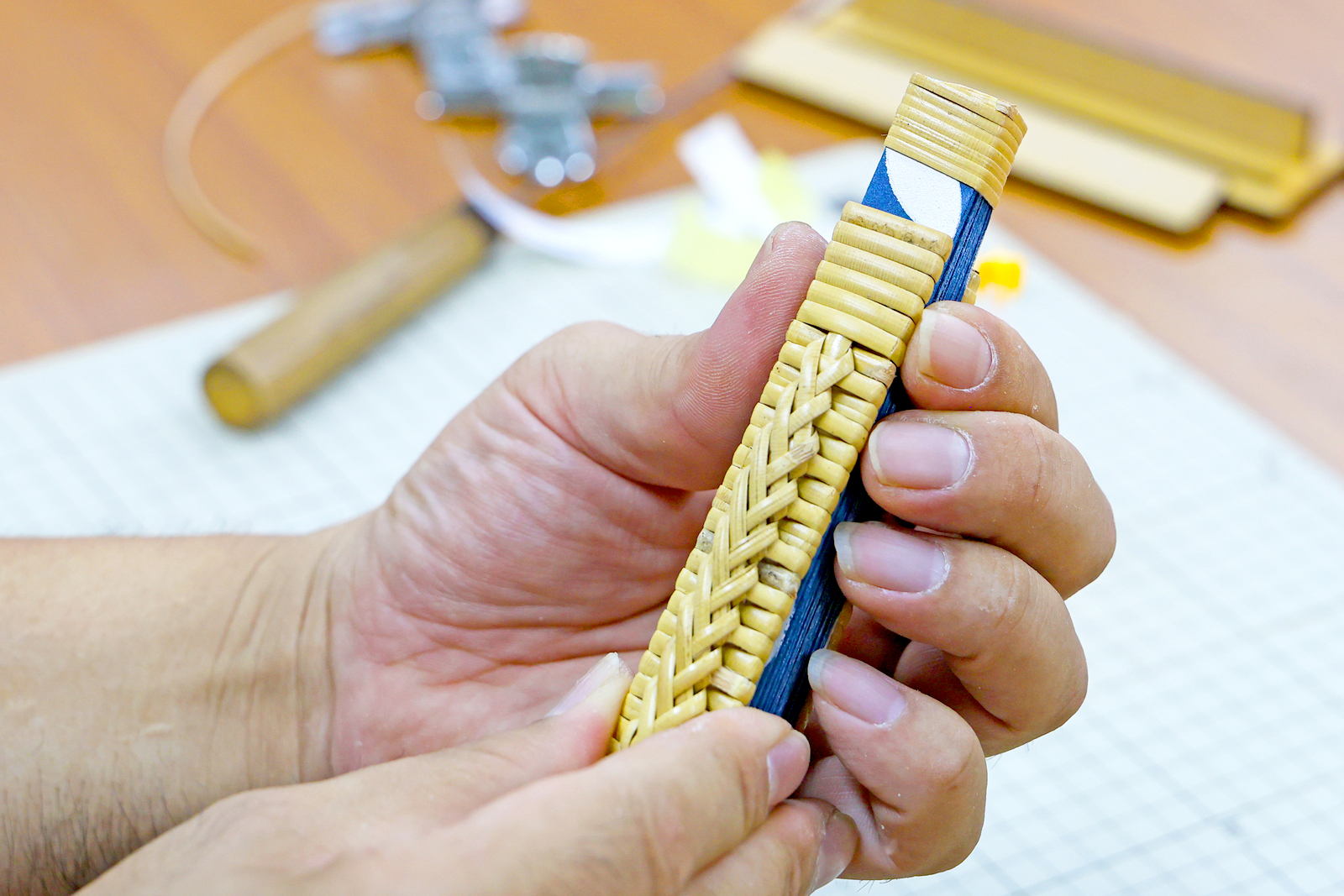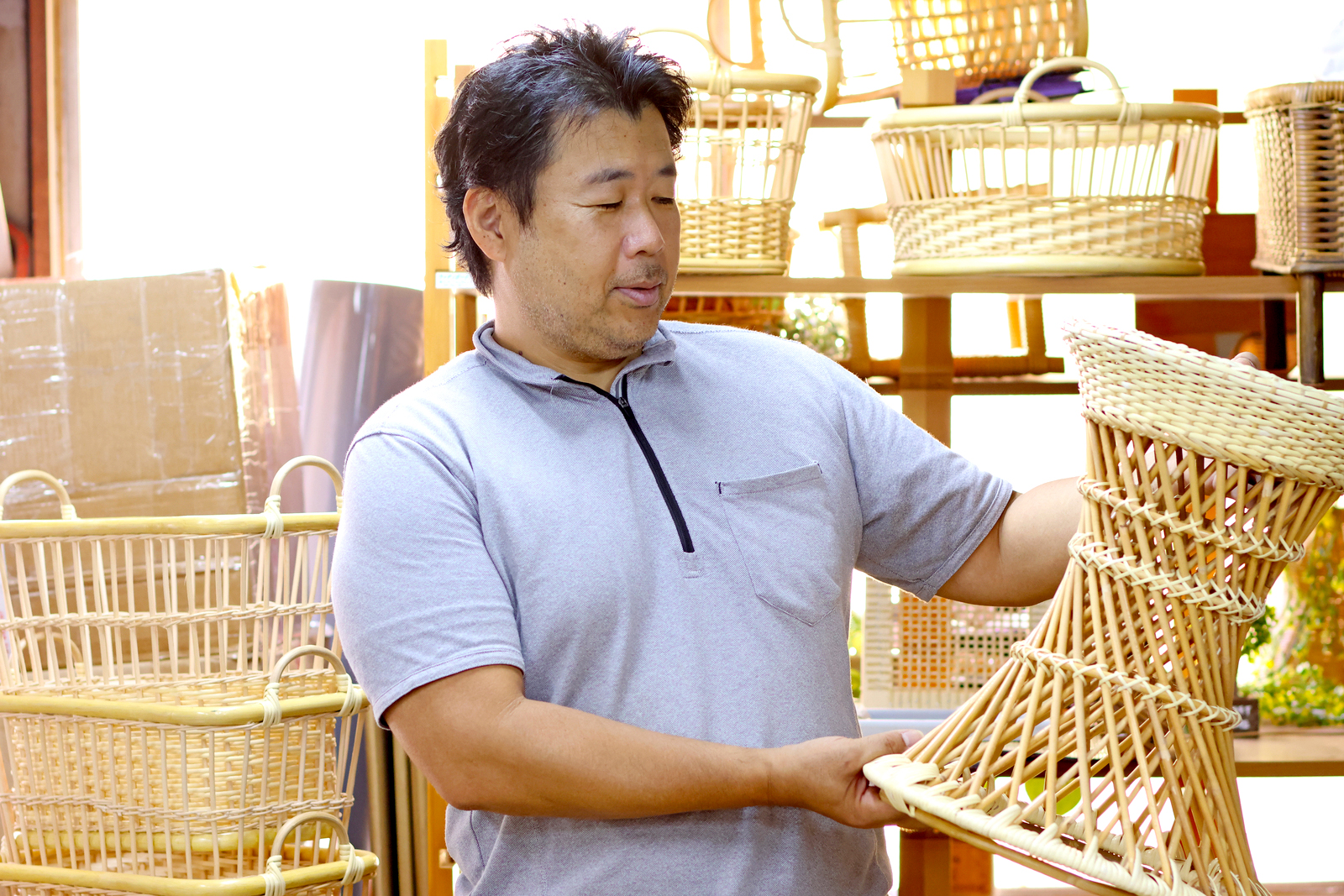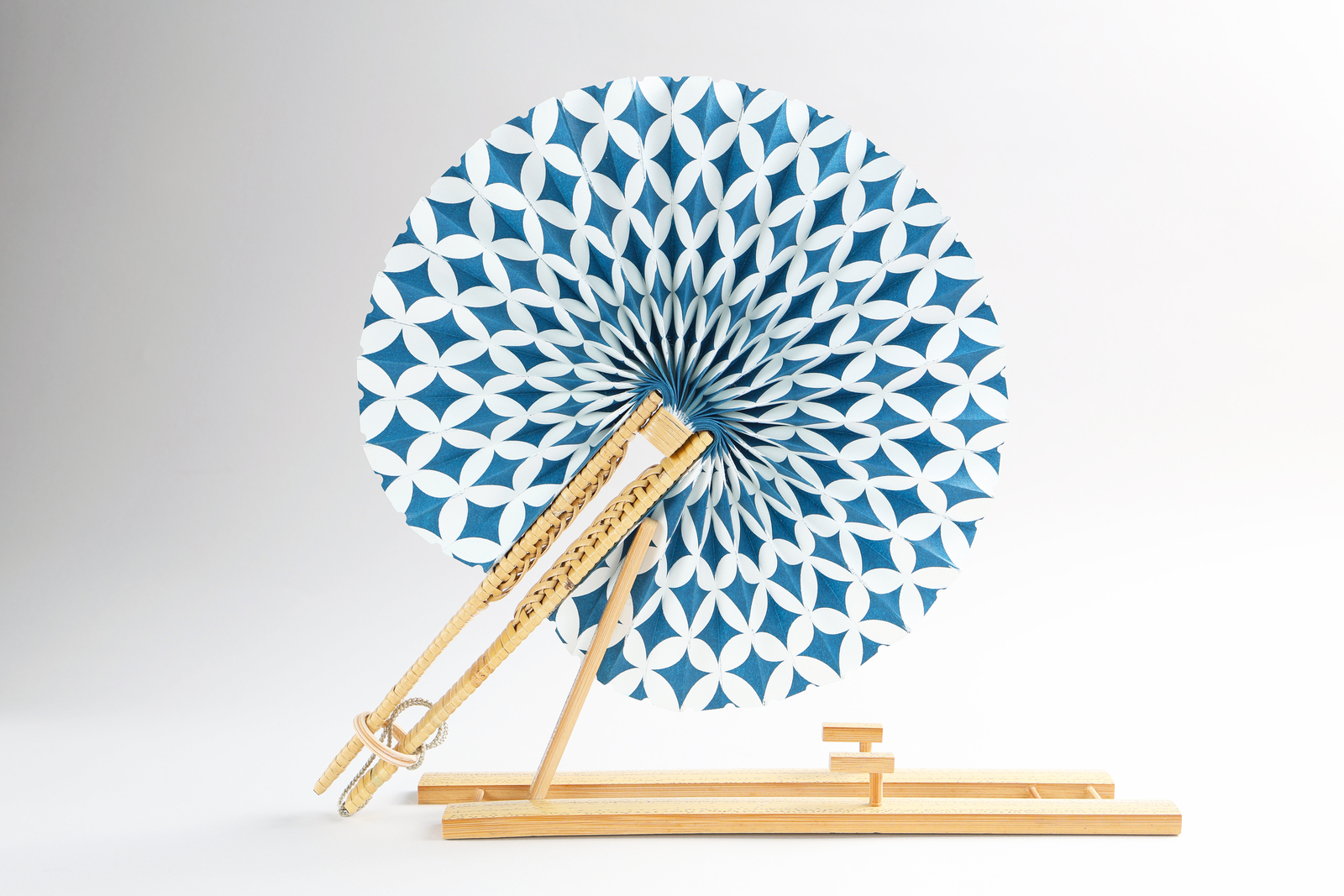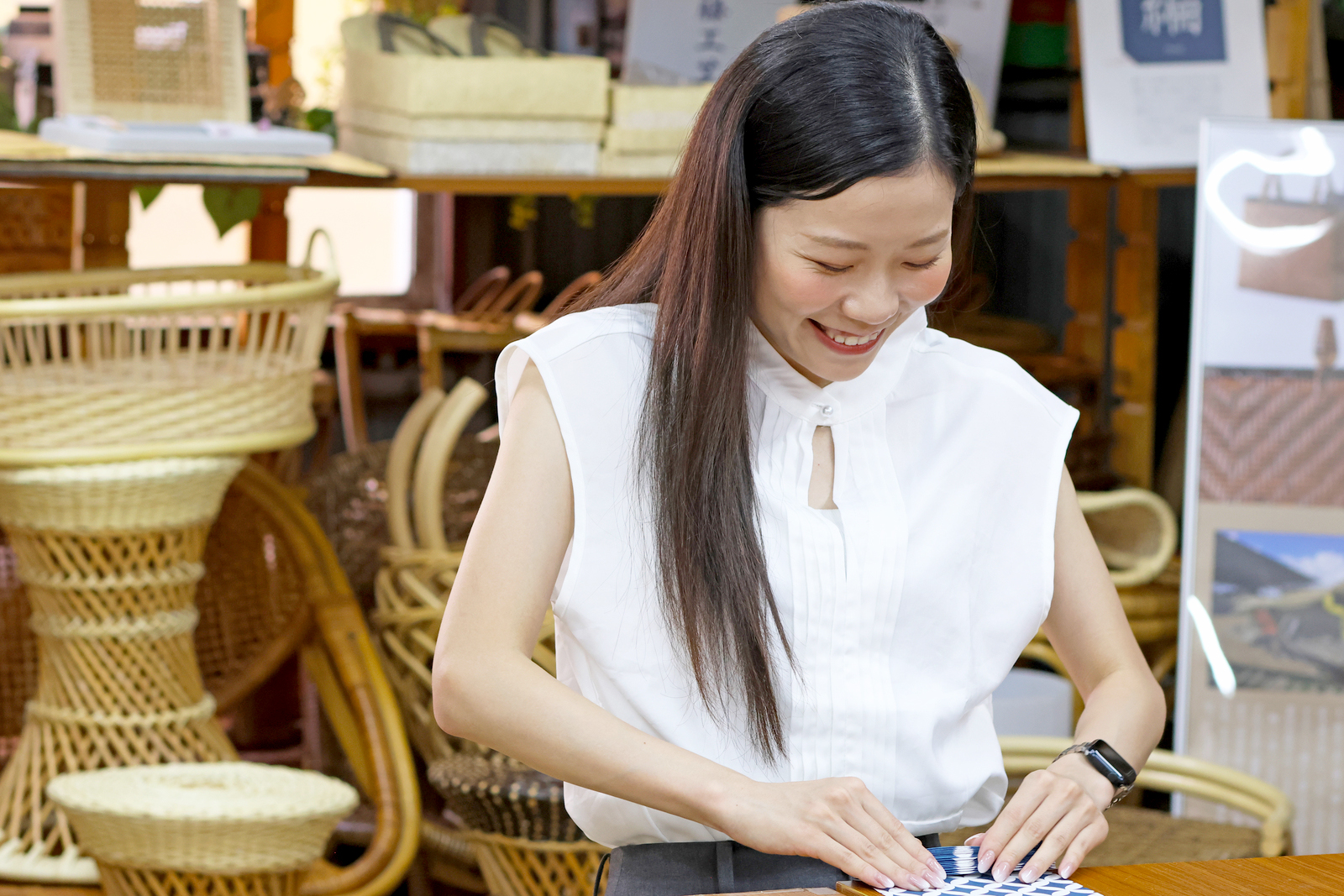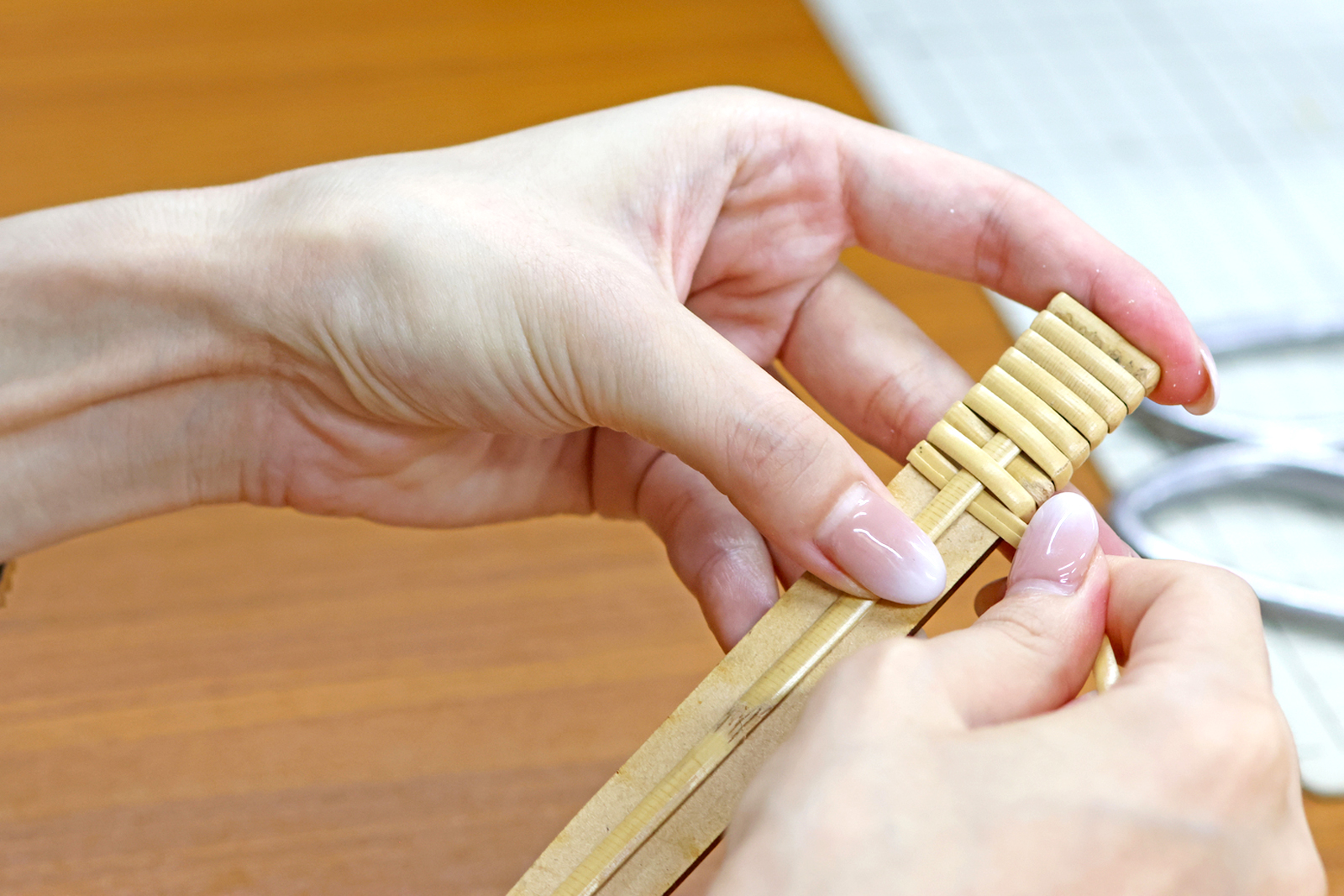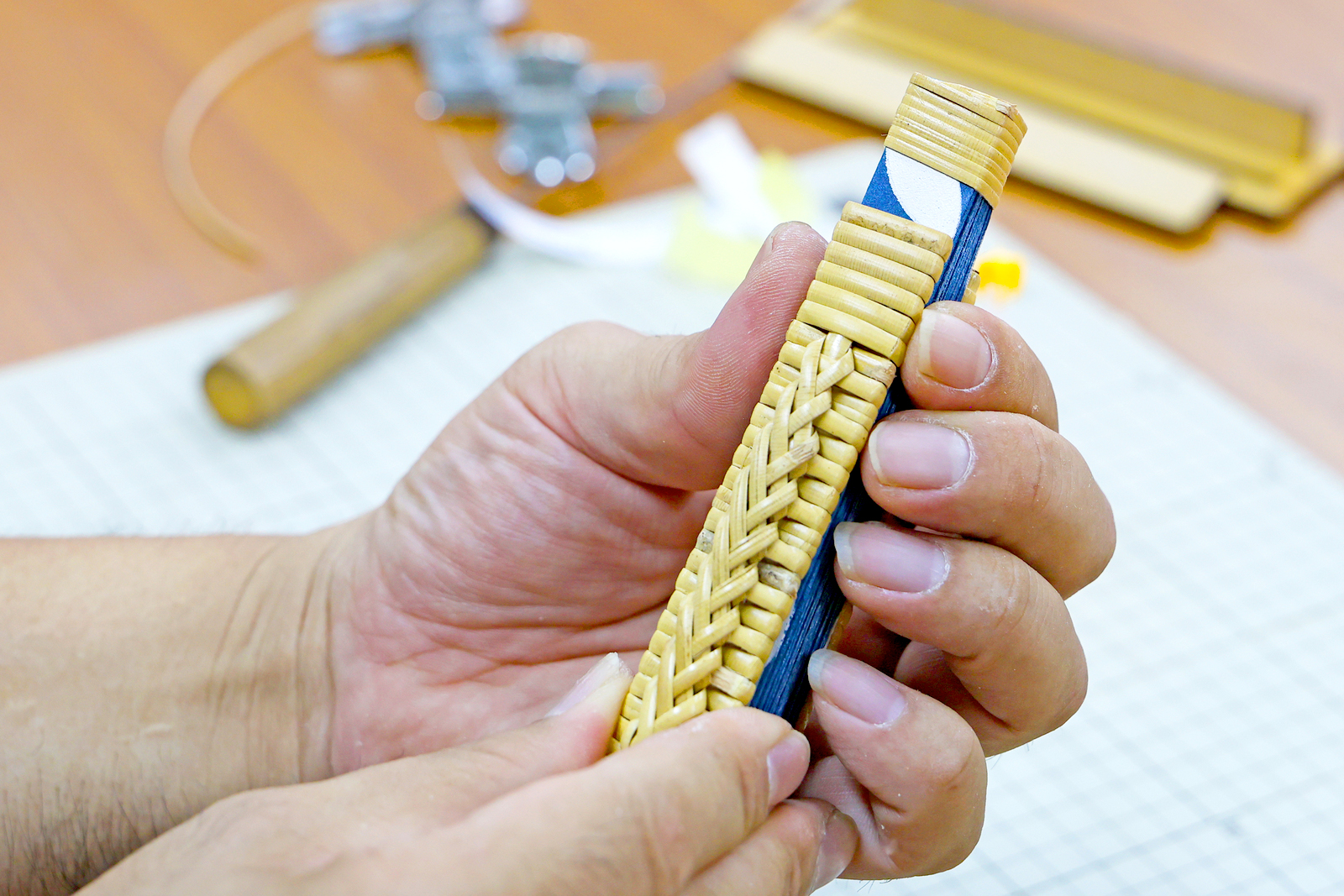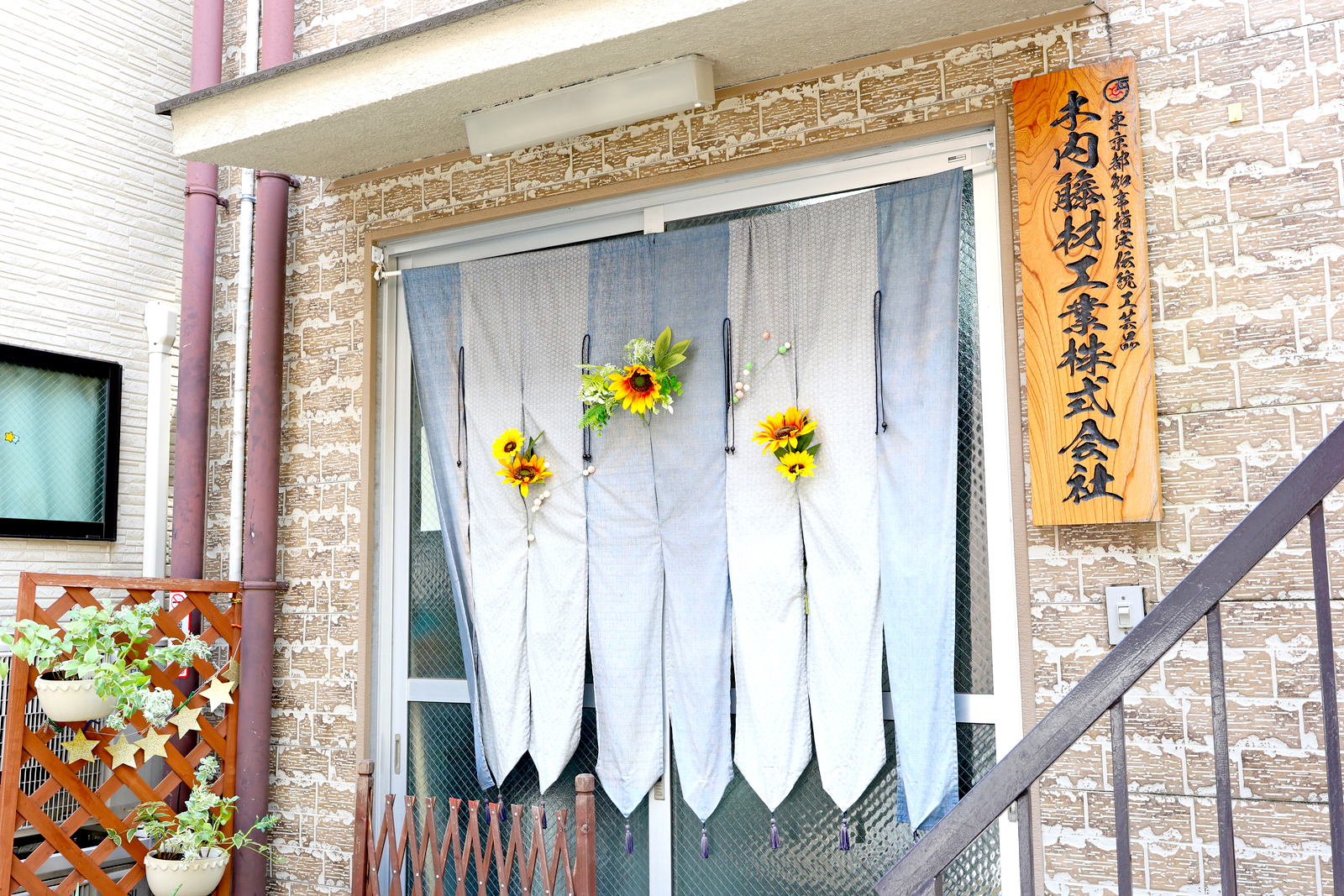From the practical to the decorative, rattan crafts as part of daily life
Rattan is a palm plant that grows mainly in Southeast Asia. It’s flexible, light, and highly resistant to breakage from tensile force. Rattan crafts are said to have been introduced to Japan about 1,000 years ago. The handles of weapons such as bows and long swords used by medieval warriors were wrapped in rattan. During the Edo era(1603-1867), it was used for everyday items like woven hats, pillows, and the outer layers of sandals. During the Meiji era (1868-1912), it began being used to make chairs and mats, and in the early Showa era (1920s-1930s), it came to be used for other furniture and interior decor.
Tokyo Rattan Kogyo uses the traditional rattan-making techniques of bending, splitting, wrapping, and decorative weaving. It also committed to using high-quality rattan from Indonesia and Malaysia, which is known for its durability and breathability.
An original rattan folding fan made with rattan crafting techniques
Kiuchi Touzai Kogyo was founded in 1931 in Sengoku, Bunkyo-ku, Tokyo. The first generation proprietor launched his rattan business when he moved to Tokyo from his hometown of Choshi City, Chiba. When the company was founded, it focused on processing and selling rattan bark, which is used as a material for a variety of rattan crafts. Starting in the 1950s, it mainly produced and sold mats made of rattan. Since then, the company has been producing a wide variety of products, including rattan furniture, interior decor, baskets, and bags.
They launched their rattan folding fans in 2020. These were developed in conjunction with the Tokyo Handicraft Project. The rattan folding fans they made and sold as part of the project led to requests from customers for an easily portable version, inspiring the creation of these folding fans. Afte a trial-and-error process that re-examined the structure of the fan itself while considering rattan’s special qualities, they came up with an original design that fully opened, featuring traditional rattan crafting techniques of wrapping and decorative weaving applied to the handle.
Hideki Kiuchi, the third-generation craftsman of Kiuchi Touzai Kogyo personally travels to Indonesia’s dense tropical rainforests to procure Sega rattan, known as the highest quality variety, carefully selecting for natural luster and hardness. It is said that Japan has a unique way utilizing the glossy texture of rattan. The industry also faces the challenge of Sega rattan becoming increasingly difficult to obtain year by year.
Experience making a rattan folding fan to experience rattan’s natural luster
Your experience begins with choosing a favorite from six colors of Washi paper, then folding it. With the pattern-side pattern facing up, the Washi paper is folded in alternating “mountain” and “valley” folds. You can fold it along the Washi paper’s fold lines, using something straight like the edge of a desk. It may seem simple, but this folding process is where the differences between skilled artisans is most apparent. Comparing your folds to those of a master artisan, you’ll clearly see how difficult it is to fold uniformly.
One you finish folding, you attach a protective sheet to the edges of the Washi paper that receive the most stress. Then you place the paper in a mold and secure it in place. Apply heat with an iron over a towel to prevent the Washi from spreading. Complete the fan portion of your project by wrapping thinly split rattan around the top of the folded Washi paper eight times. This creates the part of the fan that supports it as it opens and closes.
The traditional techniques of wrapping and decorative weaving combine functionality and beauty
Next, you make a handle. Place some rattan for decorative weaving on a handle. From there, wrap the rattan around six times. On the seventh time around, pass it under the decorative rattan. Bind it tight, ensuring that there are no gaps. This wrapping technique provides the handle with a better grip, making it less likely to slip when held.
Next, you do the decorative weaving. Open a space so that the rattan can pass through easily, then thread it from left to right through the third row from the top, folding and weaving in sequence without leaving gaps. The instructor will guide you while you weave together, and as long as you follow the right sequence, you will end up with a beautiful pattern.
For the last step, you attach the Washi paper fan and the handle. Once it’s dry, it’s complete. The handle fastener is also made of rattan. Your fan will come with a bag and box, so you can give it as a gift.
Your rattan folding fan will become a part of daily life. You’ll be able to use it for many years to come
Rattan is a durable material that can be used for many years. One of the pleasures of owning rattan crafts is their change in luster and texture over time.
The third-generation proprietor Hideki Kiuchi said, “We hope that making a rattan folding fan using time-honored techniques will help participants will feel a closer connection to traditional craftsmanship and experience the natural luster and texture of rattan.” Please come and experience the wonder of rattan crafts.
Kiuchi Touzai Kogyo is a specialty store and studio that has been making rattan products since 1931. Five craftsmen, including Hideki Kiuchi, the third-generation proprietor, are working together to promote rattan crafts. They create a wide variety of products, ranging from items for interiors such as rattan mats, furniture, and wall panels to smaller items such as bags, fans, and earrings.
